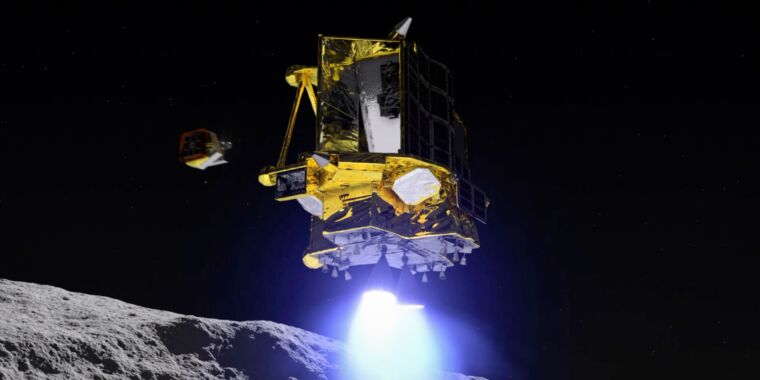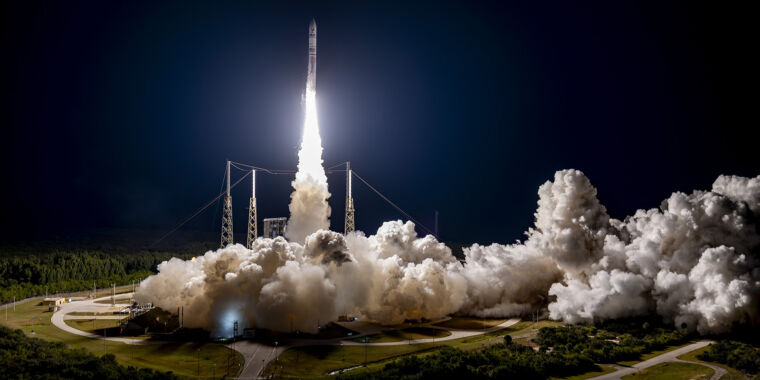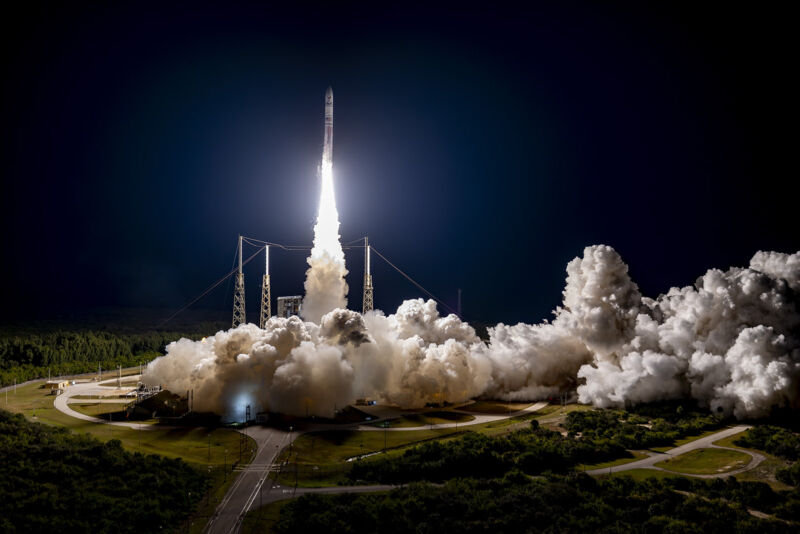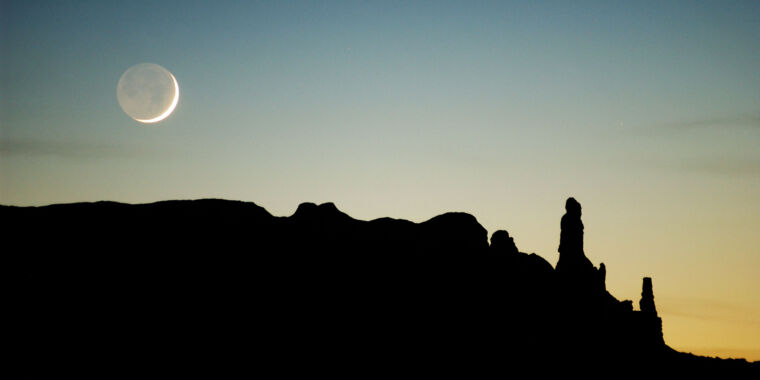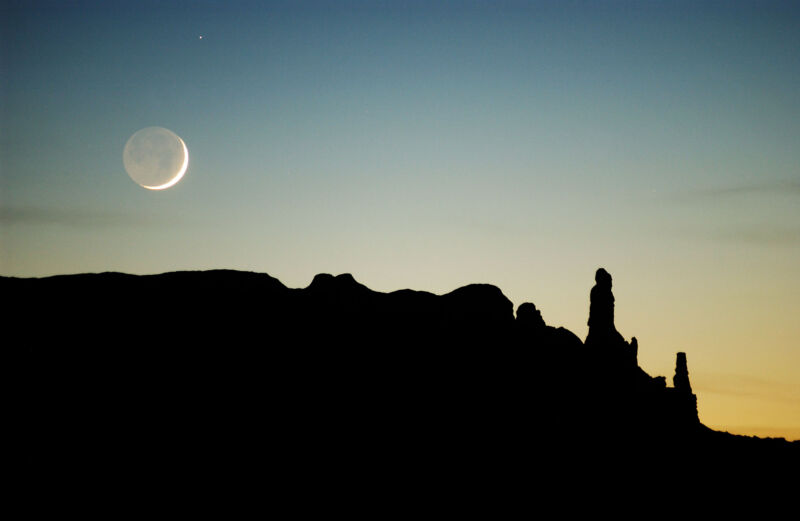Japan becomes the fifth nation to land a spacecraft on the Moon
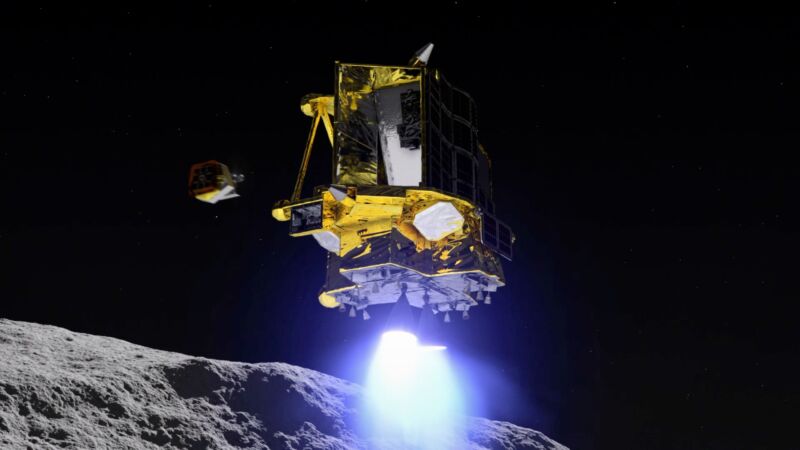
Enlarge / Artist’s illustration of the SLIM spacecraft on final descent to the Moon.
The Japanese space agency’s first lunar lander arrived on the the Moon’s surface Friday, but a power system problem threatens to cut short its mission.
Japan’s robotic Smart Lander for Investigating Moon (SLIM) mission began a 20-minute final descent using two hydrazine-fueled engines to drop out of orbit. After holding to hover at 500 meters and then 50 meters altitude, SLIM pulsed its engines to fine-tune its vertical descent before touching down at 10: 20 am EST (15: 20 UTC).
The Japan Aerospace Exploration Agency (JAXA), which manages the SLIM mission, streamed the landing live on YouTube. About two hours after the touchdown, JAXA officials held a press conference to confirm the spacecraft made a successful landing, apparently quite close to its target. SLIM aimed to settle onto the lunar surface adjacent to a nearly 900-foot (270-meter) crater named Shioli, located in a region called the Sea of Nectar on the near side of the Moon.
But ground controllers at JAXA’s Sagamihara Campus in the western suburbs of Tokyo soon discovered the lander was in trouble. Its solar array was not generating electricity after landing, and without power, officials expected SLIM to drain its battery within a few hours.
In what could be the mission’s final hours, engineers prioritized downloading data from SLIM, including imagery taken during its descent, and potentially new pictures captured from the lunar surface. Official reported good communications links between SLIM and ground stations on Earth.
“Minimum success”
Even if SLIM falls silent, the mission has achieved its minimum success criteria, JAXA said. The SLIM mission is a technology demonstrator developed to verify the performance of a new vision-based navigation system needed for precision Moon landings.
“First and foremost, landing was made and communication was established,” said Hiroshi Yamakawa, JAXA’s president. “So a minimum success was made in my view.”
One of the core goals of the SLIM mission was to land within 100 meters (about 330 feet) of its bullseye. This accomplishment would be a remarkable improvement in lunar landing precision, which typically is measured in miles or kilometers. It would also be an enabling capability for future Moon missions because it lays the foundation for future spacecraft to land closer to lunar resources, such as water ice.
Hitoshi Kuninaka, director general of JAXA’s Institute of Space and Astronautical Science, said it will take about a month for engineers to fully analyze data from SLIM and determine the precision of the landing.
“But as you saw on the real-time data livestream, SLIM did trace the expected course, so my personal impression is that we probably have been able to more or less achieve a high precision landing within 100-meter accuracy,” Kuninaka said. “So the solar cell state is unlikely to impact the full success criteria.”
Kuninaka said ground teams have seen no evidence of any damage to the solar array on SLIM. It’s possible the lander is sitting in an orientation with its solar cells facing away from the Sun. All other components of SLIM, including its propulsion, thermal, and communication systems, all appear to be functioning well.
SLIM launched September 6 on top of a Japanese H-IIA rocket, riding to orbit alongside an X-ray astronomy telescope. The spacecraft took a long route to get to the Moon, trading time for fuel to preserve propellant for Friday’s landing attempt. SLIM entered orbit around the Moon on December 25, then completed several maneuvers to settle into a low-altitude orbit in preparation for the descent to the surface.
A milestone moment for Japan
The landing of SLIM made Japan the fifth country to soft-land a spacecraft on the Moon, following the Soviet Union, the United States, China, and India. But landing on the Moon is a hazardous thing to do. Three commercial landers similar in scale to SLIM failed to safely reach the lunar surface over the last five years.
One of those was developed by a Japanese company called ispace. Most recently, the US company Astrobotic attempted to send its Peregrine lander to the Moon, but a propellant leak cut short the mission. After looping more than 200,000 miles into space, Peregrine reentered Earth’s atmosphere Wednesday, where it was expected to burn up 10 days after its launch.
A Russian lander crashed into the Moon in August, and India’s first lunar lander failed in 2019. India tried again last year and made history when Chandrayaan 3 safely landed.
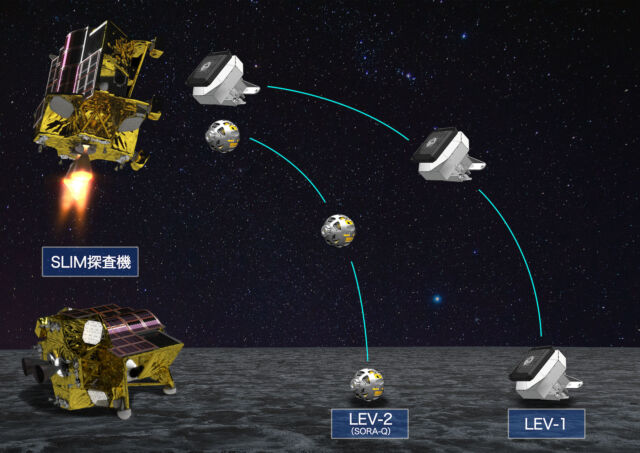
Enlarge / This artist’s illustration shows the SLIM spacecraft descending toward the Moon and ejecting two deployable robots onto the lunar surface.
Japan’s SLIM mission was primarily designed to test out new guidance algorithms and sensors, rather than pursuing scientific objectives. The technologies riding to the Moon on SLIM could be used on future spacecraft bound for the Moon. SLIM cost the Japanese government approximately 18 billion yen ($121 million) to design, develop, and build, according to JAXA.
The spacecraft is modest in size, measuring nearly 8 feet (2.4 meters) tall and nearly 9 feet (2.7 meters) across. Without propellant in its tanks, SLIM has a mass of roughly 660 pounds (200 kilograms).
“The start of the deceleration to the landing on the Moon’s surface is expected to be a breathless, numbing 20 minutes of terror!” said Kushiki Kenji, sub-project manager for the SLIM mission, before the landing.
Japan becomes the fifth nation to land a spacecraft on the Moon Read More »
